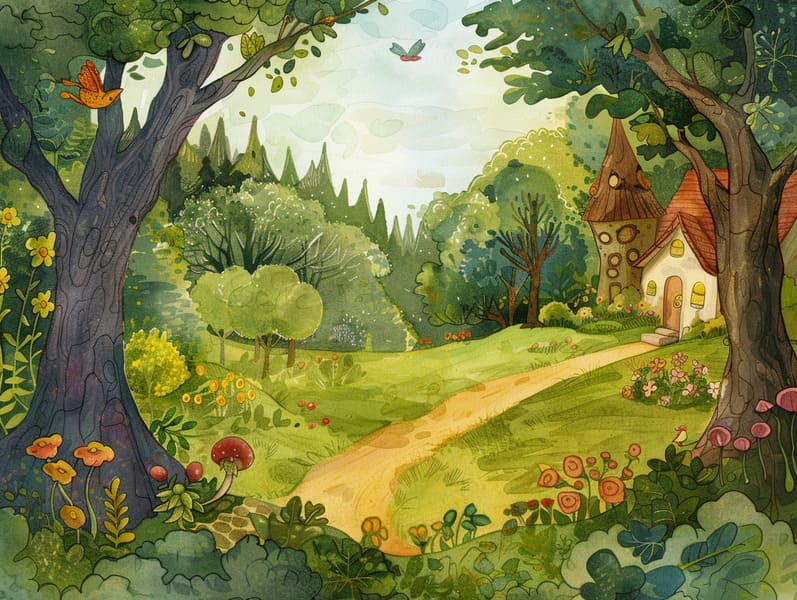The Dawn of Grimm's Fairy Tales and Their Ageless Appeal.
The Dawn of Grimm's Fairy Tales and Their Ageless Appeal.
Blog Article

Timeless fairy tales have deep roots. These stories have been conveyed from one generation to the next long before they were ever published. They originated from a variety of cultures, including African traditions. They were initially passed along among elders, often carrying themes and messages relevant to the societal norms and beliefs of the time.
The Grimm brothers, Jacob and Wilhelm Grimm, were among the first to compile and publish many of these beloved fairy tales. Their anthology, "Grimm's Story Collection," included stories like "The Story of Cinderella," "The Bread Crumb Trail," and "Little Snow White," which have since become cornerstones in the world of children's fairy tales. Similarly, H. C. Andersen's enchanting tales, such as "The Story of the Little Mermaid," and "The Little Duckling," have touched hearts worldwide, guaranteeing their place in the pantheon of iconic fairy tales.
Despite their historical roots, these tales remain as applicable as ever, especially as children's bedtime stories. These magical stories are now available in diverse formats, including artistically illustrated books, whimsical animations, and digital storybooks.
Their unwavering allure can be connected to several fascinating points:
Vital Lessons: Traditional fairy tales often impart important moral lessons. Narratives like "The Shepherd Boy and the Wolf" teach the merit of truth, while "The Race of the Tortoise and the Hare" show the qualities of resolve and meekness. These stories offer young readers clear distinctions between truth and falsehood, molding their moral compass in a soft yet important way.
Sympathy and Perception: Ancient fairy tales frequently feature heroes facing trials and tribulations, inspiring children to resonate with their struggles and boost their triumphs. For instance, "Beauty and the Beast" demonstrates the value of looking beyond appearances to appreciate the true being of a individual, encouraging empathy and perception.
Cultural Recognition: Many classic fairy tales are interwoven with the cultural contexts from which they grew. Reading these tales can provide fascinating glimpses into different traditions, advancing a sense of global insight and appreciation.
Inventiveness and Imagination: The extraordinary elements in fairy tales—enchanted forests—invigorate children’s creative dreams. These stories take readers to enchanted realms, engendering imaginative thinking and a sense of amazement that endures a lifetime.
Timeless fairy tales are not only charming but also didactic. They serve as bewitching tools in enhancing various cognitive and emotional skills in young readers. When classic fairy tales are read aloud, they develop speaking abilities by showing new word meanings and sophisticated sentence structures. This practice also fosters hearing perception and concentration, as children focus on every detail, looking forward to see what happens next.
Furthermore, exploring the themes and characters of old fairy tales can nurture intellectual skills and evaluative skills. Little ones are taught to pinpoint patterns, foresee events, and comprehend cause these guys and effect. These deliberations also contribute to young readers communicate their thoughts and feelings, enhancing their emotional intelligence.
In today’s electronic age, the abundance of online storybooks has made these stories more acquirable than ever. Internet resources and online apps offer comprehensive collections of children's fairy tales that can be seen or listened on anytime, anywhere. Fairy tales recited are particularly in demand, providing an fascinating method for children to be a part of these charming tales. Sound books and read-to-me videos bring characters and settings to life, often accompanied by charming sound effects and songs that raise the narrative journey.
The lasting appeal of classic fairy tales lies in their ability to change to modern society while preserving their main lessons. Contemporary modernizations of these stories often spotlight more varied figures and modern settings, making them relatable to today’s audience. However, the underlying themes of guts, empathy, and impartiality remain unchanged, continuing to resonate with readers of all ages.
Timeless fairy tales also offer a sense of assurance and comprehensibility. They deliver up a systematic narrative with a straightforward beginning, middle, and end, often drawing to a close with the termination of conflicts and the triumph of virtue over corruption. This uniformity can be placating for young ones, extending a sense of stability in an fluid world.
Timeless fairy tales continue to bewitch and instruct new generations, maintaining their grandeur and meaningfulness in modern society. As children's bedtime stories, they provide a perfect blend of wonder and wisdom, supporting moral values, empathy, and creativity. The proliferation of online fairy tales and the well-received status of fairy tales narrated promise that these traditional tales remain acquirable to new generations.
By conserving and communicating these stories, we continue to admire the rich tapestry of legends and cultural heritage. Whether you are experiencing a artistically illustrated book, browsing a online collection, or hearing an audio story, the grace of children's fairy tales is always within reach. These tales show us of the consistent effect of stories and its ability to bring us together across eras and regions.
Be it you are seeing a gorgeously illustrated book, viewing a web-based collection, or hearing an audio story, the spell of old fairy tales is always within reach.
These stories highlight of the consistent spell of narratives and its ability to connect us across time and space, casting a charm that enchants and educates alike.